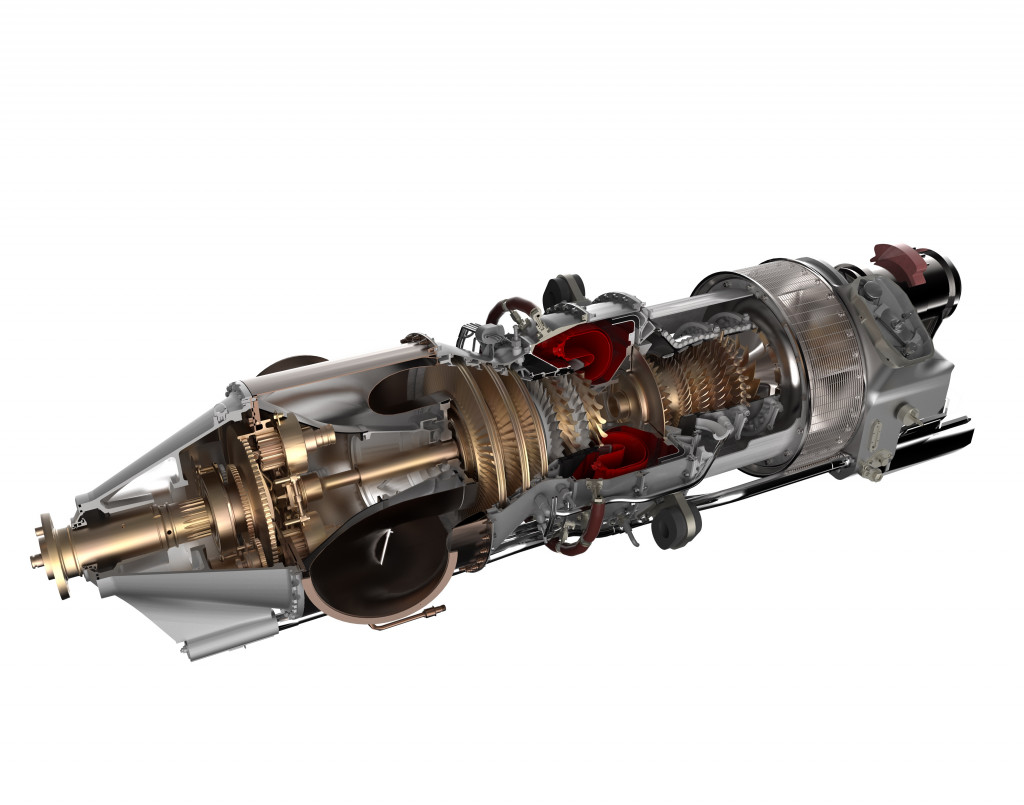GE Plans to sell 10,000 Additive Machines During Next 10 Years

Typically, an engine of this kind includes more than 800 hundred parts. But the new engine, which GE calls Advanced Turboprop — or ATP — will have just a dozen or so because large parts of the engine will be 3D printed from titanium and steel. Image credit: GE Aviation
Latest News
November 21, 2016
GE Additive, which calls itself the world’s leading digital industrial company, says it is well positioned to advance the additive manufacturing revolution across several industries after several large investments. The company has invested approximately $1.5 billion in manufacturing and additive technologies at GE’s Global Research Center (GRC) in Niskayuna, NY, in addition to building a global additive network of centers focused on advancing the science.
In a press release, GE says it is fully focused on becoming a leading supplier of additive machines, materials and software for several industry segments, including aerospace, power generation, automotive, medical and electronics. It wants to grow its new additive business to $1 billion by 2020 and sell 10,000 additive machines over the next 10 years.
In addition to building out a portfolio of additive machines, the company anticipates that 25% of the advanced powder metal used in manufacturing will be in the additive manufacturing space. GE’s key efforts underway to position the company as an industry provider include:
- Reaching an agreement to acquire a 75% stake in Concept Laser GmbH for $599 million last month. The agreement is structured to allow GE to take full ownership over several years. The deal is subject to regulatory approvals and expected to close this year.
- Agreeing to purchase controlling shares of Arcam AB of Sweden this month, following the conclusion of an extended public tender offer. Arcam shares tendered during the extended acceptance period—combined with Arcam shares acquired by GE—correspond to approximately 73.57% of the total number of outstanding shares for GE. GE had also bid $732.9 million to acquire SLM Solutions, but withdrew it after investor Elliott Management opposed the deal.
- The company is not new to additive manufacturing. In 2012, GE acquired Morris Technologies, previously the major U.S. service bureau for metal applications.
“These technologies will be bolstered by a growing global network of GE centers focused on additive research and technology,” said Mohammad Ehteshami, VP of GE Additive via a press release. “As GE develops its additive engineering and manufacturing capabilities, it further positions us to be better providers of the equipment.” In addition to GE’s Global Research Center in New York, other GE centers engaged in additive R&D include:
- Center for Additive Technology Advancement (CATA), which opened in April in Pittsburgh. The CATA design lab is focused on broadening additive capabilities across the GE businesses.
- Additive Technology Center, which opened in 2015 in West Chester, OH, and center supports GE Aviation’s additive design, application engineering and manufacturing capabilities.
- Avio Aero in Cameri, Italy, which is advancing the use of electron beam melting in producing parts with highly complex material properties.
GE says additive manufacturing is a key part of its evolution into a digital industrial company and will leverage the Predix platform as part of GE’s Brilliant Factory initiative. GE’s industrial businesses are heavily involved in design and producing components using additive. Some examples include:
- GE Aviation: The LEAP jet engine produced by CFM International (a 50/50 joint company of GE and Safran Aircraft Engines) will use 6,000 fuel nozzle components created via additive process. About 35% of the Advanced Turboprop Engine (ATP), which will power the new Cessna Denali single-engine turboprop aircraft, will be produced using additive. GE engineers were able to reduce 855 subtractive manufactured parts in the ATP to 12 complex additive manufactured parts.
- GE Oil and Gas: Additive technology is being used to produce lean burning combustion swirlers, which mix air and fuel in the combustion chamber.
- GE Power: In 2018, the company introduces an advanced turbine shroud produced using additive.
Learn more about GE Aviation's LEAP jet engine via the video below.
Subscribe to our FREE magazine, FREE email newsletters or both!
Latest News
About the Author
Jamie Gooch is the former editorial director of Digital Engineering.
Follow DE





